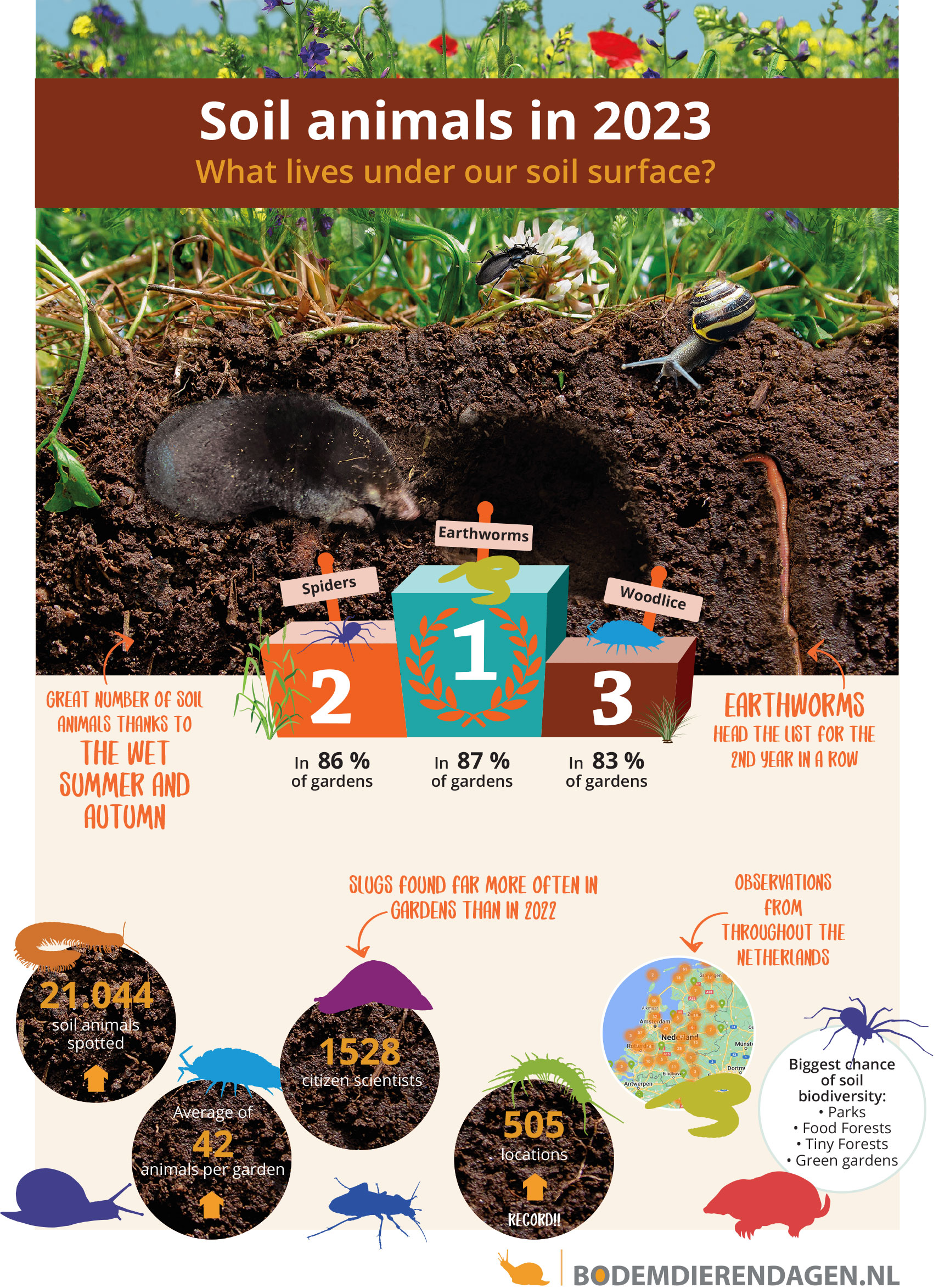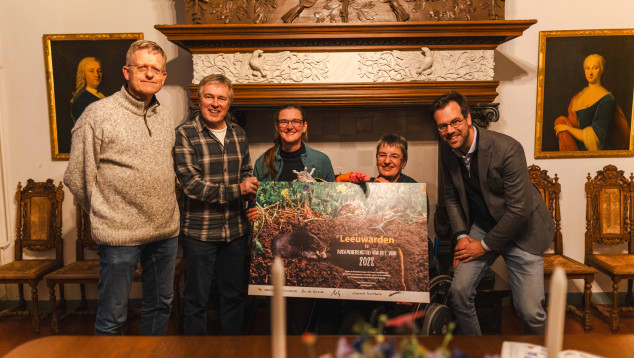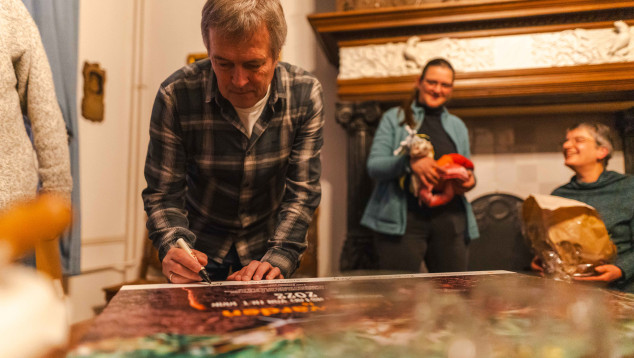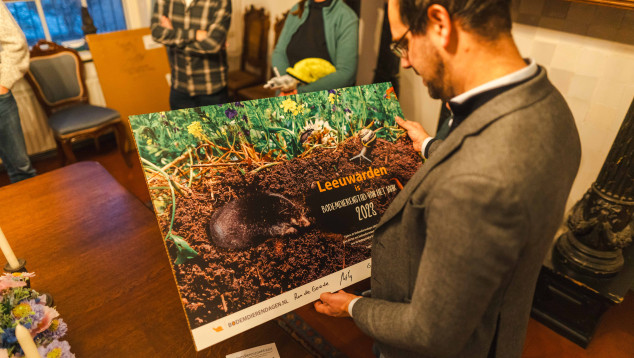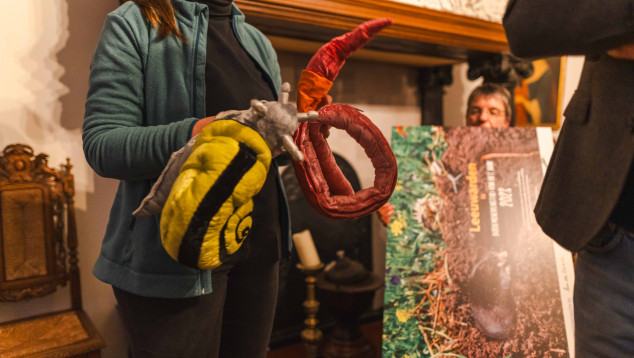Earthworms winners of humid 2023 & Leeuwarden bags the title Soil Animal City of the Year
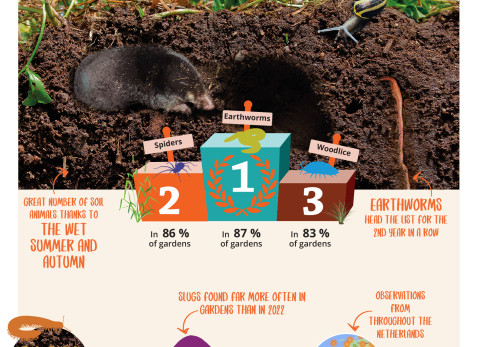
Earthworms winners of humid 2023 & Leeuwarden bags the title Soil Animal City of the Year
Spring has started in the Netherlands, and that means our soil life is very active again. How much do we know of the creatures living under our feet? That is where the citizen science project of the Soil Animal Days comes in. What did the results of 2023 show us? Earthworms like wet weather and managed to retain their position in the national soil animals Top 3: they were spotted in 87% of gardens. And in Leeuwarden, people searched for soil animals with such enthusiasm and a clear focus on the importance of soil animals that the Frisian capital may proudly call itself Soil Animal City of the Year.
Last autumn, thousands of people once again went in search of life on and under the ground: from earthworms to ants and from woodlice to millipedes. What exactly lives in the soil of our gardens, urban parks, and villages? We know too little about that often unseen but nevertheless very important biodiversity. A living, healthy soil literally and figuratively constitutes the basis for our existence. The Soil Animal Days focus on 10 ambassadors for biodiversity under our feet: the Tiny Ten.
Records
More than 1500 people took part as observers in the citizen science part of the research: they reported more than 21,000 animals – a record – that they encountered during their soil animal safari. Thanks to these efforts, it was possible to calculate a ’biodiversity score for the soil’ at more than 500 locations – yet another record – throughout the Netherlands.
Since 2015, the Dutch Soil Animal Days have been organised by the Netherlands Institute of Ecology (NIOO-KNAW) and Wageningen University (WUR) with the help of VU Amsterdam (VU) and a growing number of other organisations and people. Over the past 9 years, about 105,000 soil animals from the Tiny Ten, also referred to as ‘soil treasures’, have been found.
How are soil animals faring in 2023?
2023 has been a favourable year for soil animals, as shown by the numbers collected by the researchers of the Soil Animal Days. The relatively cool, damp weather most probably played a role in this. That is because many soil animals are sensitive to dry conditions.
Top 3 of Soil Animals
Earthworms were found in most gardens, closely followed by spiders (86%) and woodlice (83%). This sequence was the same in 2022, but not in the years before that. However, all 3 groups of soil animals were found in a greater proportion of gardens than in the previous year.
More
“A higher than average number of slugs, ants and beetles were found this year,” says Soil Animal Days researcher Ron de Goede (WUR). On average, observers also counted more animals per garden this year: “This year as many as 42, where we saw an average of about 39 over the years and last year just 36.” However, last year, the summer was very dry and warm.
Best gardens
“It is no surprise that the green garden is a place where soil animals like to live. Due to the large number of gardens investigated, the figures nicely illustrate how diverse the groups of animals spotted are,” says soil ecologist and Soil Animal Days organiser Gerard Korthals (WUR). That is clearly higher than in a half-green garden, for example. Also, Tiny Forests and food forests score well for soil life. De Goede: “Actually, the Tiny Forests score better each year, with increasing figures that show a positive development in these miniature forests.”
Report scores
Each garden receives a soil biodiversity score based on the soil animals found there. If we compare the scores with the general target score for that type of garden, we can see opportunities for improvement. Two things are striking in 2023. First of all, there is quite a difference between what could be scored and what was actually scored as a report score. That is, in fact, the case each year. However, the second point is the good news: this year, the two different figures were closer to each other than ever before. For example, a score of 9.2 in the green gardens is a great target to aim for. The average report score for such a garden was 6.8 in previous years, but in 2023, it rose to as much as 7.5. The same pattern can be seen for other types of garden.
All of the figures can now be found on the results page of the Soil Animal Days website. That includes data from the second, more difficult level: that of interesting species within the 10 main groups. At least one such species was reported in over 70% of gardens. “Examples are the leopard slug, rotund disc or common glow-worm. Or one of my favourites: woodlice such as the common striped woodlouse,” states soil animal expert Matty Berg from VU Amsterdam. In this way, everybody can ‘delve deeper’ into the new knowledge. With the right care for, knowledge and good management of the living soil, more opportunities can be created for soil life and the whole of (urban) nature.
Battle of the Cities
Which city is the most soil animal friendly and makes the greatest effort to realise this? As an extra part of the competition, the Soil Animal Days Battle of the Cities took place for the second time. Healthy, living soil is important everywhere, of course, but especially in the city. Therefore, several cities actively searched for their ‘soil animal oases’. And the winner is: Leeuwarden.
“Leeuwarden is the deserving winner of the title Soil Animal City of 2023,” explains researcher Korthals. In the city, many different species were found at a wide variety of locations, from the spider Cicurina cicur to the millipede Brachyiulus pusillus and species of the Amara genus of carabid beetle. The highest score within the city boundaries was a rare 9.8 – in a small plot of urban woodland. “The city was also very active in involving its residents: with about 50 observations, Leeuwarden submitted far more observations than the other cities, and many children took part, too.” De Goede adds: “We need to understand the importance of a healthy soil, and establish it as a standard to strive for. Making this message clear and attractive to children is the strong point of the organisation in Leeuwarden.”
Just one day before the announcement, the winners agreed to make a concerted effort for the Battle of the Cities in 2024, and they are still committed to doing that.
It is great that we have received the title ‘Soil Animal City of the Year’. This demonstrates that many residents of Leeuwarden are committed to a healthy and diverse soil life.
Good runners-up are Rotterdam and, once again, Utrecht, the first title winner in 2022. Ede also made a nice effort in the local city park. The Battle of the Cities highlights the green side of the city. With better soil life, you help all of nature and society. Examples are less paving, more soil-covering plants, leaving tree trunks on the ground and letting autumn leaves lie on the ground in the parks. The soil life processes autumn leaves into food. Leaves also ensure that the soil dries out less and limit flooding.
10 years of Soil Animal Days & each day
Each year, the Soil Animal Days culminate into World Animal Day. “In 2024 as well, everyone will be welcome to help again from 20 September through to 7 October. That will be the 10th edition of the joint quest for our vital soil life in cities and villages,” announces principal organiser Froukje Rienks from NIOO. “But every day can be a soil animal day, of course. By simply stepping outside, you are already on a soil animal safari in your own garden or the park around the corner.” Therefore, you can now submit your soil animal observation any day you choose at www.bodemdierendagen.nl and contribute to the research.
For the ninth time, the Netherlands Institute of Ecology (NIOO-KNAW) and Wageningen University & Research (Biointeractions & Plant Health Group and Soil Biology Group) organised the citizen science project Soil Animals Day. They did that with the help of researchers from these organisations and VU Amsterdam, and with a growing number of partners. Together with citizens, they are mapping soil life at more and more places in the Netherlands. From the results, it can be concluded that green gardens and parks play an important role in maintaining urban nature.
Organisations that plan activities during the search for these important soil animals, and whose members help to support the research are: Dutch Institute for Nature Education and Sustainability (IVN), Scouting Nederland, the science festival Weekend van de Wetenschap, EMS Films, Dutch Institute for Biology, Stichting Steenbreek, ecological organisation Velt, the organisation for gardeners Pientere Tuinen, the garden sector organisation Tuinbranche Nederland, the organisation for food forests Voedsel uit het Bos, the Dutch Research Agenda (NWA), the Royal Dutch Society for Natural History and Field Biology (KNNV), the organisation for biodiversity data Jaarrond Tuintelling, Naturalis Biodiversity Center, International Union for Conservation of Nature (IUCN) NL, NL Greenlabel, the gardeners of gardening organisation AVVN, the outdoor organisation for young people JNM, children’s farm Kinderboerderijen Actief, knowledge center Kenniscentrum EIS, City of Amsterdam, city lab Stadslab Wageningen, World Wildlife Fund (WWF), environmental organisation Natuur & Milieu, Netherlands Entomological Society, Herman van Veen Arts Center, organisation for Dutch landscapes LandschappenNL, Delta Plan for Biodiversity Recovery, radio show Vroege Vogels, the outdoor art exhibition IJsselbiënnale, Stoas University of Applied Sciences and the number of partners continues to grow each year.
For more information:
- Principal organiser and head of science communication Froukje Rienks, Netherlands Institute of Ecology (NIOO-KNAW), tel. +31 6 1048 7481 +31 317 473400, f.rienks@nioo.knaw.nl
- Principal organiser and soil expert Gerard Korthals, Wageningen University & Research, tel. +31 6 2886 434, gerard.korthals@wur.nl
- Earthworm expert and co-organiser Dr Ron de Goede, Wageningen University & Research, tel. +31 317 48504, ron.degoede@wur.nl
- Soil science expert and co-organiser Prof. Matty P. Berg, VU Amsterdam / University of Groningen, tel. +31 6 1253 037, m.p.berg@vu.nl
Soil Animal Days website: www.bodemdierendagen.nl.
The results can be found in the overview map for 2023, and the details to further delve into can be found on the special results page 2023.
Illustration(s): available as downloads with the online version of this press release.
Source infographic: Soil Animal Days.
Photos presentation of the title Soil Animal City of the Year: Mitch de Pon/City of Leeuwarden.
Photos of the identification card and the scoring form can be found on the Doe Mee-pagina.
In addition, these photos of soil animals and soil animal researchers are available as well.

